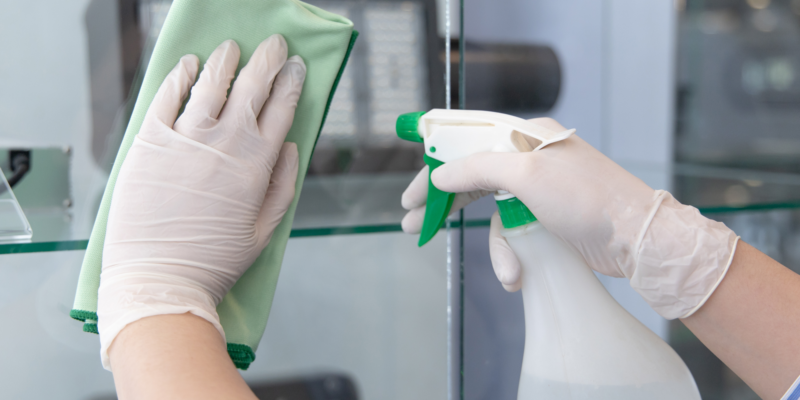Maintaining a bright, welcoming atmosphere within buildings and maintaining aesthetics depend heavily on clean windows. Modern solutions have replaced outdated procedures in window washing over time. We’ll examine the variations between conventional and contemporary window cleaning techniques in this comparison guide, taking into account each method’s efficacy, safety, efficiency, and impact on the environment.
Customized Techniques for Cleaning Windows
Since ancient times, people have cleaned windows using conventional techniques, which typically require physical labor and standard household cleaning supplies. Here are a few salient features of conventional techniques:
Hand instruments: Squeegees, scrubbers, and towels are some of the instruments that are usually used in traditional window washing.
Cleaning Solutions: When using traditional methods, cleaning solutions are typically a combination of vinegar, water, and dish soap or a specific window cleaning solution.
Manual Labor: To remove dirt and grime from windows, window cleaners must exert physical force while cleaning them.
Ladders: Scaffolding or ladders may occasionally be needed to access windows that are difficult to reach.
Time-consuming: Using traditional methods can take a lot of time, particularly in large structures with lots of windows.
Techniques for Cleaning Windows Today
To expedite the process, modern window cleaning techniques make use of cutting-edge technology, specialized tools, and environmentally friendly solutions. Key components of contemporary techniques are as follows:
Water-Fed Poles: These poles, which have soft brushes and filtered water within, let cleaners operate from the ground without the use of scaffolding or ladders.
Pure Water Systems: To clean windows spotlessly, modern window washing frequently uses pure water systems that eliminate minerals and pollutants.
Efficiency: Since modern equipment can cover huge areas quickly and worker time is reduced, labor-intensive procedures are often more efficient.
Safety: By eliminating the necessity for operating at heights, the use of water-fed poles and ground-based equipment enhances worker safety.
Eco-friendly: The environmental impact of window cleaning is lessened by pure water systems and environmentally friendly cleaning agents.
Efficiency and Excellence
Both conventional and contemporary techniques can produce windows that are spotless and free of streaks. Modern techniques do, however, have several advantages in terms of quality and effectiveness:
Streak-Free Results: Sophisticated techniques, especially those that employ pure water systems, frequently provide immaculate and streak-free windows.
Reach and Accessibility: Thanks to advancements in technology, window cleaners can now reach and clean windows that were previously inaccessible.
Consistency: Because they use specialized brushes and purified water, modern cleaning techniques yield cleaner results more consistently.
Safety Points to Remember
A vital consideration in window washing is safety. Working on ladders or scaffolding is a common part of traditional practices, which can be dangerous. With the utilization of ground-based equipment and water-fed poles, modern systems stress safety:
Lower Risk: Because modern techniques allow workers to clean windows from the ground, there is a significant reduction in the risk of falls and injuries.
Harnesses and Anchoring: For additional safety when using water-fed poles, workers are usually fastened with harnesses and anchoring devices.
Speed and Effectiveness
In general, modern window washing techniques are quicker and more effective than conventional techniques:
Speed: Newer equipment is more effective at washing windows in businesses and high-rise buildings because it can cover more areas in less time.
Labor Costs: Building owners and cleaning businesses can save money by employing current techniques that reduce labor time.
Impact on the Environment
Environmental factors are becoming more and more significant. Contemporary techniques provide benefits in this aspect:
Pure Water Systems: By eliminating the need for chemical detergents, pure water systems improve the environmental friendliness of contemporary techniques.
Water consumption: Water conservation is aided by the fact that modern processes generally consume less water than traditional ones.
Chemical Disposal: Cleaning chemicals that may be hazardous to the environment may need to be disposed of using traditional ways.
Expense Elements
When deciding between conventional and contemporary window washing techniques, cost is an important factor to take into account:
Initial expenditure: Compared to more conventional tools and solutions, modern equipment and pure water systems could need a larger initial expenditure.
Labor Costs: Although contemporary techniques shorten labor times, a long-term cost analysis should take equipment costs into account.
In summary
Both conventional and contemporary window cleaning techniques have advantages, and which one to choose will depend on a number of variables, such as the kind of building, accessibility, financial constraints, and environmental concerns. Modern techniques are becoming more and more popular, especially in the commercial and high-rise window cleaning sectors, because they prioritize efficiency, safety, and environmental friendliness. For residential settings and low-rise buildings, conventional procedures can still be useful. To create windows that are pristine, secure, and ecologically conscious, the choice should ultimately be made with cleanliness, safety, and sustainability in mind.


